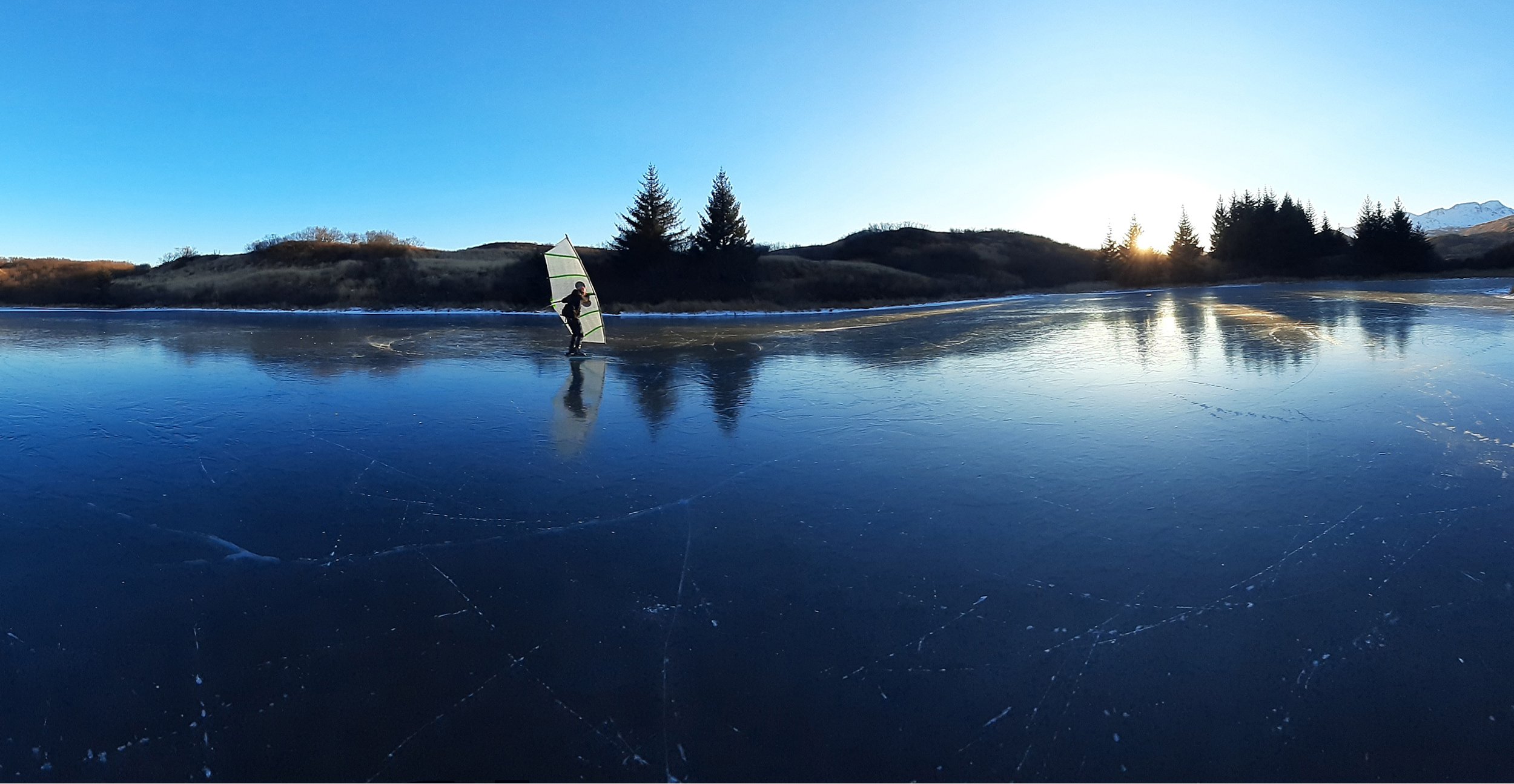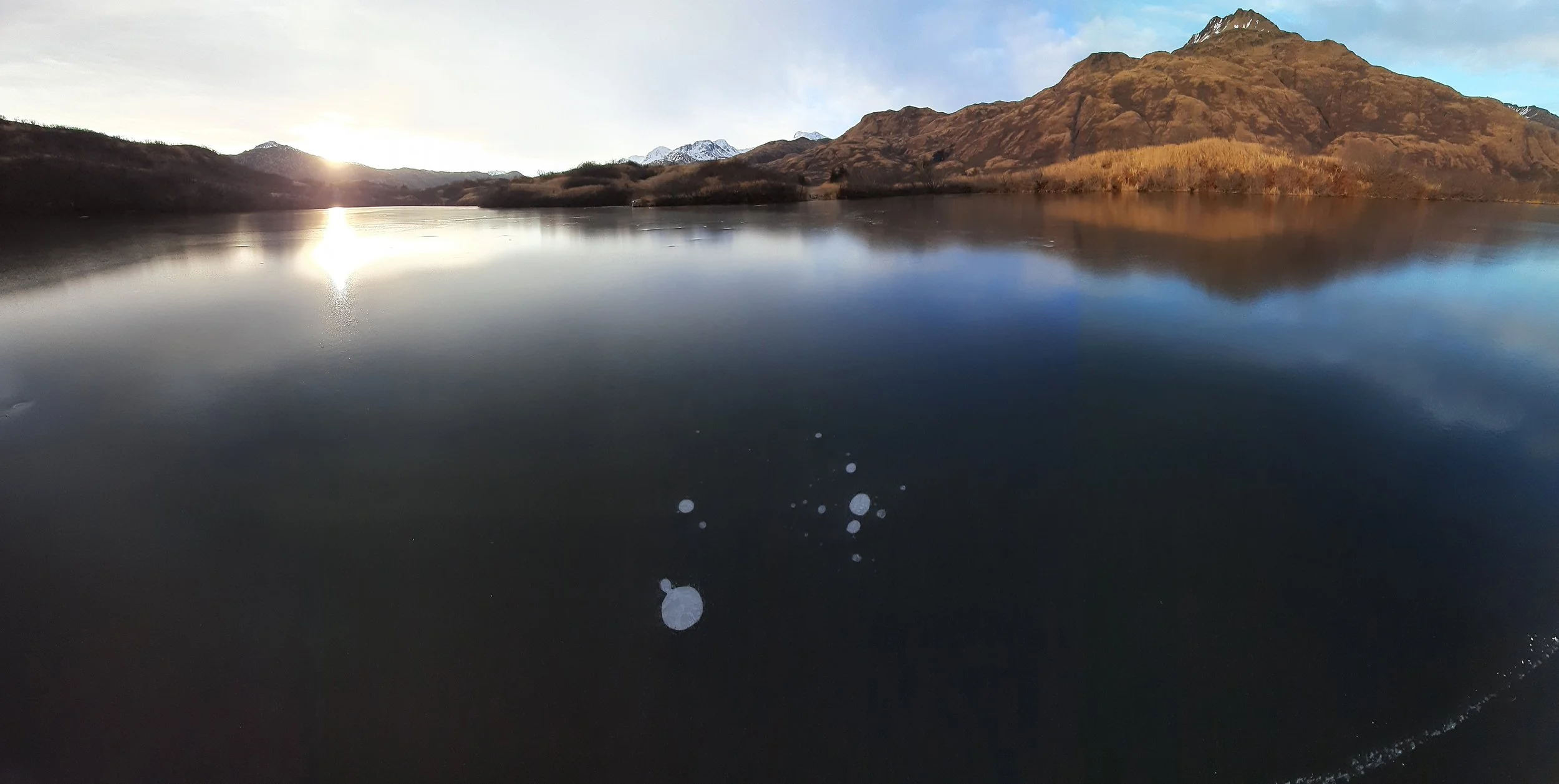
Library
useful links, resources, food for thought
Buskin Lake Kodiak AK NOV 2024 Kitewing 2.4 TW, Ermine Williwaws, Scarpa F1 Lt boots, ATK Candy 5 bindings

Links to gear

Skates
SKATES for wing sailing 14DEC24
Back in the day nordic skates were built to be adapted to hiking boots. The skates came with bindings reminiscent of ancient box toe ski equipment. Folks started to use Nordic ski bindings to upgrade performance, serious skaters note the comparison between a nordic skate with nordic ski bindings and a clap skate designed for the arena.
Nordic skate evolution has trended to narrow decks since the nordic ski binding is designed to mount to narrow x country race skis.
Some of us built adapter plates to mount Viole release plates and a telemark binding to the nordic skate.
Telemark ski gear has not evolved at the same pace as lock down back country ski gear. Tech bindings and boots for back country skiers represents the pinnacle of technical development aimed at light weight and functional performance.
We used to sail on nordic skate boots clipped in to a nordic skate. Without a releasable binding, its a matter of time before you will catch a skate at high speed. We prefer and strongly recommend releasable bindings for hand held wing sailors. Big boots designed for down hill performance make skate control much more predictable as the pace picks up.
High end nordic skates these days have narrow decks designed for non releasing nordic bindings. You can still buy cheaper nordic skates with wide decks, but you get what you pay for. Blades may not be very good. Softer steels require more frequent sharpening. Blades are set in epoxy or staked but not pinned to aluminum decks. Aluminum decks may not be very hard or able to withstand torque loads imposed by tech boots and tech bindings and aggressive wing sailors.
The only skate we know of which is commercially available designed for tech bindings is the Ermine Skate Williwaw.
The Williwaw is a heavy skate designed for skate sailing. Longer taller blades in conjunction with a sturdy deck designed for high loads. No more blow outs due to twisted skates or bent decks, or blades which fall out of the deck. The Williwaw is described by some, "A game changer.”
Some european wing sailors like to use taller skates to avoid boot out as well as be able to take advantage of wing angles closer to vertical which is more powerful. Taller skates mean you can use a taller wing.
Tall skates are usually a lot heavier than the nordic counter part. Tall skates can be tough to get in and out of. Wider blades may not be as precise on smooth hard black ice.
You may have to swim with your skates on. The elephant in the room. Skates should be easy to remove.
We sail exclusively on tech bindings with a very light weight tech boot mounted to an Ermine Skate. Either the Williwaw or an A110. The 50cm A110 works well enough.
There are many bindings which will work with a tech boot mounted to a skate. Suggest light weight is important.
DIN settings for skates do not correlate to skis. We use a din setting of 5 for aggressive high end sailing on a set of Williwaws. In fact the preferred ATK Candy 5 binding we use is a kids ski binding.
Skate sailing set ups do not compromise skating as badly as some might believe. The extra weight is salient. However the ability to ride an edge with precise control makes up for the weight. Cruising at top speeds it is much easier to relax in your tech boots. Less fatigue.
Longer blades work better on rough ice. Longer edges track better than short edges. Dragging an edge is slow. Short blades are quicker since they are light weight with presumably a shorter blade profile.
Of course it is easy to skate sail on any blades designed to ride ice. Hockey skates work. Wide blades are slow. Lots of rocker or a short profile blade might not be very stable as speeds pick up. Hollow ground edges are aggressive.
Ermine Skate Williwaws, ATK Candy 5 binding
Wingblades, built by George Peterson. Super nice skates modeled after a similar european version. Dynafit Speed bindings.
Custom carbon fiber skate body floats blades and bindings with impressive lean angle.
Carbon skate body.

Skis
Cross country skis, lift service skis, back country skis, they all work. If it glides or rolls over the surface under foot it will likely work with a hand held wing.
What you use for specific conditions will make a difference. The less resistance the faster its possible to sail. Faster surfaces are easier.
Snow type is important. Ride on top of the snow is easier than pushing snow out of the way. Frozen hard transformed snow is a premium condition.
Skis are common on ice too rough for skates. Set a sharp edge. We use an 88 or 89 degree edge with a 1 degree base bevel.
Cross country skate skis and boots work well with light weight skate sails on hard snow surfaces. Using a skate sail to power skate on skate skis is fun. Beware of surfaces too hard for an X country ski base.
As speeds pick up the gear required gets heavier and more complex.
Telemark gear works well. Free heels make skating on the ski easier. Skating a few steps to get going in light air makes a difference.
Back country tech bindings and boots are light weight compared to skis intended for resort lift service.
We use the same light boots and tech bindings for skates and skis. We are not lift service skiers. Earn your turns or use a wing.
Less is more. The more resistance generated by ski width, length and required effort, the harder it gets to sail on skis.
Skis with less radius or side cut are faster because you will not be dragging as much edge when you ride the edge. Shorter skis reduce drag, longer skis are easier to ride at high speeds.
Suggest thinner, shorter super G skis than what you might use on the slopes. It has been suggested that a kids super G ski might work for an adult wing sailor. 185 cm skis are more than enough ski for an average adult looking for a wing sail ski.
Sail what you have until you know more about snow. It does make a difference to have better skis.
We find old skis at yard sales or out back at the ski store. If you know what you want it might cost less to do a bit of rummaging.
Rockland Maine FEB23

Helmets, Picks, Throw line
The most important bit of gear you carry on the ice would be your picks. Any picks are better than no picks. However not all picks are created equal. Picks need to be accessible, easy to use. Picks in a pocket are next to useless. If you have to find your picks after you fall in you are wasting valuable time. The faster you get out, the easier it is to get warmed back up.
Picks worn loosely around a collar can flip behind your head making them hard to find. Snug picks up under the collar so they stay put.
Picks in holsters attached to packs get left behind when folks take off a pack to explore without.
Suggest a good commercially available set of picks are worth the bux.
Throw ropes are crucial. Many do not carry picks, despite the abject warnings. This is why we strongly recommend carry a spare pair in your pack. Without picks anyone caught in the water will be happy to grab your throw rope.
We use a reel which is easy to stow in a pocket, deploys accurately much further than a conventional bag can be thrown, self cams on itself, can be used like a monkey fist to deploy if the first shot goes wide. The reel floats. The line is 3mm Dyneema or spectra SK75; it is very strong.
Throw ropes available for swift water are bulky, bulky bags get left behind, they freeze when wet.This is why we like the reel which is carried in a pocket. Bags need to be reloaded to throw, or they are awkward. The reel is either rolled or used like a monkey fist.
The reel is a design from Finland we copied. The first reel we ever saw was produced by Oa Sjoberg. We were happy to have reels in our DN ice boats. Oa provided.
Commercially available throw ropes for skaters are suggested. Otherwise build your own reel and be smug.
Helmets are like seat belts. The first time you fall and hit your head you will start wearing a helmet. Wing sailors should always wear a helmet. The most common injury on the ice is a blow to the head, slip and fall smack it, see stars. If you saw stars, if you blanked for even a few seconds, you are a patient evaluating TBI or traumatic brain injury. Helmets are an obvious accessory.
The best helmet we have found, the Black Diamond Half Dome. The Half Dome is easy to adjust to fit over or under the hood of your parka. The helmet shell is a tough plastic which yields to blows thereby diffusing energy. Half Dome is also a minimal design which does not soak up water; it is very light weight, costs less than 60 USD.
There are many flavors of helmet.

















